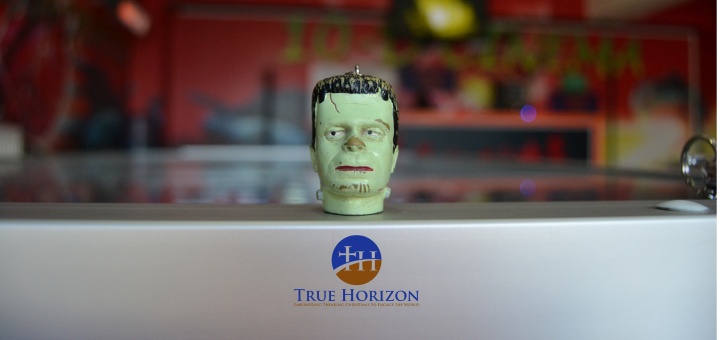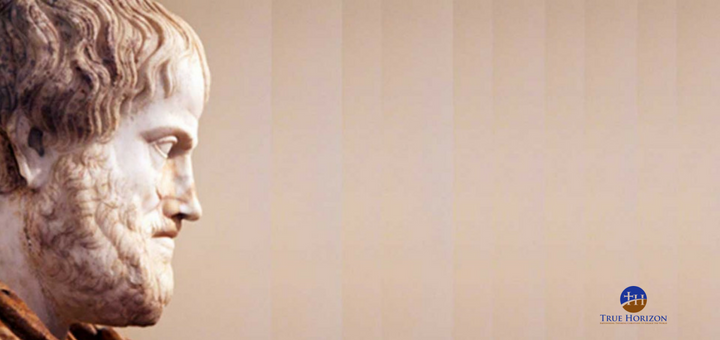The Cure For Spiritual Disorientation
Getting Aligned With The World
If you want to fly safely through the sky, you need to have a constant reference to the ground. That seems simple enough. If it’s a nice day, you can see the horizon line just fine. But if you’re in the clouds, you need another method. For that reason, a tremendous amount of effort has gone into designing cockpit instruments that display an artificial horizon line to the pilot. But that line has to be trustworthy. It has to replicate the real one. We always need a way to be able to see the “true horizon.”
If the church wants to address its spiritual disorientation problem, it needs to make it a priority to invest in doing the same kind of thing. The church needs a way to stabilize its vision of reality. And the place to begin doing that is with the basics of reality itself.
The Ground You Cannot See
Apologists like me love to talk about the origins, design, archaeology, and the scientific evidence that points to the existence of God. We are known to make the case for God as the Creator, Designer, and Sustainer of the world. That’s great. We need to do all those things. In fact, Christianity is unique among the world religions in its ability to offer tangible evidence for its trustworthiness.
But if the church is going to be properly grounded, we need to go beyond that kind of evidence. We need to refocus on things that are vital to rational thought but that our culture has corrupted. I’m talking about the features of our world that you can’t see but that are just as real as the ground you walk on. The kinds of things you have to know and understand to think clearly about anything at all. I’m talking about the philosophical triumvirate of Truth, Goodness, and Beauty.
For thousands of years, thinking people have recognized each of these as objective features of the world. If you want to understand how we’ve gotten disoriented, you have to start with them.
Hijacking Objective Reality
Think about it. For thousands of years, human beings saw Truth, Goodness, and Beauty as objective features of the world. But they weren’t just things that existed outside of us. We understood that they were important and reliable because they were grounded in the nature of God himself.
But contemporary culture has hijacked each of them. It has relativized them. Told us they were things we could decide for ourselves. The results have been disastrous. But there is a way to fix it. And the first step in confirming the church’s true horizon is to put truth, goodness, and beauty back where they belong — as the unmoving reference points for all we do and think.
Truth Is The Essence Of God
Truth has always been central to the human relationship with God. The Prophets of the Old Testament lamented it’s passing.
- Isaiah 59:14-15 — “truth stumbled in the streets. Truth is nowhere to be found”
- Jeremiah 7:28 — “truth has perished, it has vanished from their lips”
Jesus refers to truth more than 75 times. In the Book of John alone, he uses the double emphatic phrase, “Truly, truly I say to you …” twenty-five times. Truth was the reason he came to Earth at all:
- John 18:37 — “For this reason I was born, and for this reason I came into the world, to testify to the truth. Everyone on the side of truth listens to me.”
Ultimately, he transformed our understanding of the nature of truth itself. He personalized it.
- John 14:6 — “I am the way, the truth, and the life. No one comes to the Father except through me …”
If we want our churches to be properly oriented, we have to defend the truth. We have to know that truth before it can set us free.
Goodness Is The Character Of God
Every one of us recognizes what C. S. Lewis put so succinctly:
“Across cultures universally, there are common principles that everybody knows and lives as if they are true.”
You can’t torture toddlers for fun. It is wrong to murder an innocent person. You shouldn’t steal your neighbor’s iPhone. Rape is wrong. We all have human rights.
Where do these ideas come from? As I have discussed elsewhere, the existence of these kinds of things points to the fact that there is a standard we all use to determine morality. Individuals cannot create that standard for themselves. It would lead to chaos. Neither can we agree on them by accepting the consensus of our communities. If that were the case, there would be no way to argue against the actions of the Nazis or southern slave owners. After all, they governed by the consensus of their respective communities.
There is only one other possible explanation for these kinds of things. There is an external standard that defines them. And the only other source of such a standard of goodness is the character of God himself.
Beauty Is The Reflection Of God
As my article, “A Mind For The Beautiful,” points out in great detail, the classic understanding of beauty was that it was a property of objects. Beautiful things displayed symmetry, order, balance, unity, and proportion. They gave the inference of design and purpose.
As an example, the Wright Brothers were not the first ones to build an airplane. They were the first to be able to control an airplane. That’s why you know about them today. And they were able to do that because they spent countless hours studying and cataloging the movement and structure of birds. They watched their feathers warp and twist. They observed how the birds set their wings before takeoff and after landing. In other words, they owed their unique success to their ability to replicate nature.
We don’t create beauty. We recreate it. Beauty is something we find in the world around us. The best we can do is mimic it.
The Divine Mind
As it turns out, Truth, Goodness, and Beauty are each objective features of the world. They always have been. We do not create them. We discover them. They are foundational to reality itself. And they are what we need to know to properly orient ourselves to the world. They help form a true horizon.
Even the Greek philosophers knew this. They talked about truth, goodness, and beauty as elements of a concept they saw behind the orderly nature of the universe.
This concept was rich in meaning. It included reason, choice, reflection, and calculation. It explained the relational harmony between belief and actuality. The Greeks considered this to be some kind of impersonal force — a “divine mind.” And they had a name for it.
They called it the Logos.
The Impersonal Comes To Life
When the Apostle John begins his gospel, it is no coincidence that he does so with this Greek idea in mind. He makes it clear that the “force” is far from impersonal. In fact, he knows exactly who it is.
“In the beginning was the Word (“Logos” ), and the Word was with God, and the Word was God. He was with God in the beginning. Through him all things were made; without him nothing was made that has been made. In Him was life and the life was the Light of men.”
It turns out that Jesus is the Logos. He is the Divine Mind behind the universe. The foundation of Truth, Goodness, and Beauty. Jesus obliterated any notion that the spiritual and physical worlds are disconnected. He is the place where they merge.
If the church is spiritually disoriented, we know where to look to get ourselves right-side up.
As the God who became a man, Jesus showed us that he is our true horizon — the reference for where we should be living our lives. When we focus on truth, goodness, and beauty, we are really focusing on him.
He gives life meaning. He makes life safe.
Jesus — and the Truth, Goodness, and Beauty he defines — is the cure for our spiritual disorientation.
Photo by Kristopher Allison on Unsplash




